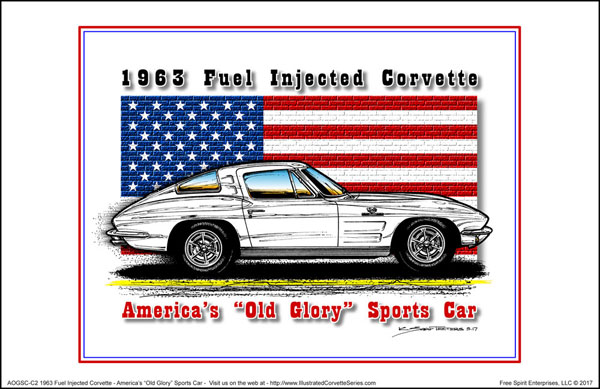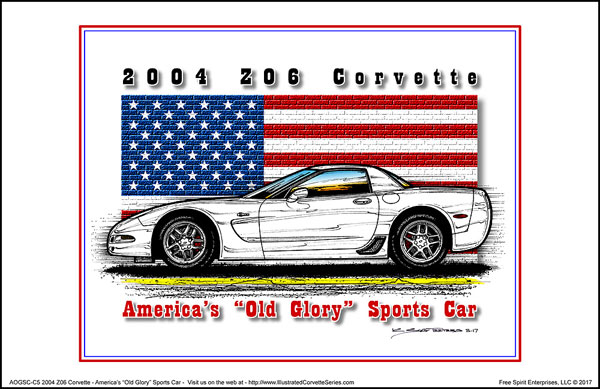Chevy’s Steroid-Injected “Bad Boy” Vette
 Dateline: 11-9-17 (All photos GM Archives) Kudos to the Corvette product planners and engineers for expanding on the Z06 “performance model” concept. “Suspension” has always been key to the Corvette’s success. From 1957 to 2000 Chevrolet offered many variations of suspension options for Corvette buyers. The early offerings up to 1975 were for serious track cars and included, the 1957 to 1959 RPO 684 Heavy Duty Brakes and Suspension, the 1960 to 1962 RPO 687 Heavy Duty Brakes and Special Steering option, the 1963 RPO Z06 Special Performance Equipment package, the 1967 to 1969 L88 engine and J56 Special Heavy Duty Brakes package, the 1970 to 1972 RPO ZR1 and ZR2 packages, and the 1973 to 1975 RPO Z07 Off Road Suspension and Brake Package. Up to this point, all of the before-mentioned special option packages were considered, “Off Road”, that’s code for; RACING.
Dateline: 11-9-17 (All photos GM Archives) Kudos to the Corvette product planners and engineers for expanding on the Z06 “performance model” concept. “Suspension” has always been key to the Corvette’s success. From 1957 to 2000 Chevrolet offered many variations of suspension options for Corvette buyers. The early offerings up to 1975 were for serious track cars and included, the 1957 to 1959 RPO 684 Heavy Duty Brakes and Suspension, the 1960 to 1962 RPO 687 Heavy Duty Brakes and Special Steering option, the 1963 RPO Z06 Special Performance Equipment package, the 1967 to 1969 L88 engine and J56 Special Heavy Duty Brakes package, the 1970 to 1972 RPO ZR1 and ZR2 packages, and the 1973 to 1975 RPO Z07 Off Road Suspension and Brake Package. Up to this point, all of the before-mentioned special option packages were considered, “Off Road”, that’s code for; RACING.
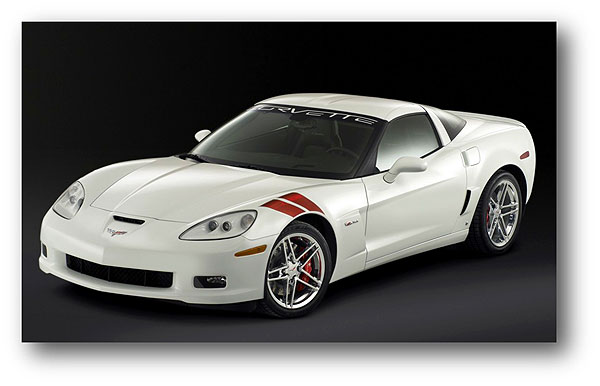 For spirited street use, from 1974 to 1982 customers could option RPO FE7, the Gymkhana Suspension that gave customers stiffer front sway bar and stiffer springs for just $7.00! The term “gymkhana” means, “A day event comprising of races and other competitions between horse riders or car drivers.” A more modern term today would be, “Autocross.” By 1982 the price had ballooned all the way up to $61.00! From 1984 to 1984 customers could order RPO Z51 Performance Handling Package. Then from 1987 and 1988 Chevrolet added RPO Z52, the Sport Handling Package. For 1989 and 1990 only the RPO Z51 Performance Handling Package was available. From 1991 to 1995 the Z07 Adjustable Suspension Package was back on the Corvette order sheet. Beginning in 1996 RPO Z51 was back and was available through the entire C5 production run and the C6 cars until 2009. The Z51 moniker arrived once more in 2014 as part of the all-new C7 lineup of Corvettes.
For spirited street use, from 1974 to 1982 customers could option RPO FE7, the Gymkhana Suspension that gave customers stiffer front sway bar and stiffer springs for just $7.00! The term “gymkhana” means, “A day event comprising of races and other competitions between horse riders or car drivers.” A more modern term today would be, “Autocross.” By 1982 the price had ballooned all the way up to $61.00! From 1984 to 1984 customers could order RPO Z51 Performance Handling Package. Then from 1987 and 1988 Chevrolet added RPO Z52, the Sport Handling Package. For 1989 and 1990 only the RPO Z51 Performance Handling Package was available. From 1991 to 1995 the Z07 Adjustable Suspension Package was back on the Corvette order sheet. Beginning in 1996 RPO Z51 was back and was available through the entire C5 production run and the C6 cars until 2009. The Z51 moniker arrived once more in 2014 as part of the all-new C7 lineup of Corvettes.
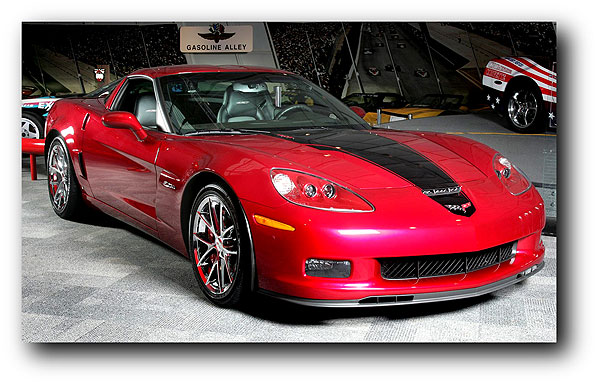 All of the before-mentioned suspension options were strictly limited to suspension, brakes, and steering. They were kind of like the C6 and C7 Grand Sports, but without the extra bling and didn’t look any different than a basic Corvette – no special badges or decals designating the performance suspensions. The C5 Z06 was a total game-changer. Not only did the C5 Z06 have more power under the hood, it looked like it had more power under the hood, with dedicated scoops, roof configuration, wheels, fat tires and trim. “Z06” was added to the Corvette Spotters game and was elevated quasi-track car status – for “serious” Corvette drivers.
All of the before-mentioned suspension options were strictly limited to suspension, brakes, and steering. They were kind of like the C6 and C7 Grand Sports, but without the extra bling and didn’t look any different than a basic Corvette – no special badges or decals designating the performance suspensions. The C5 Z06 was a total game-changer. Not only did the C5 Z06 have more power under the hood, it looked like it had more power under the hood, with dedicated scoops, roof configuration, wheels, fat tires and trim. “Z06” was added to the Corvette Spotters game and was elevated quasi-track car status – for “serious” Corvette drivers.
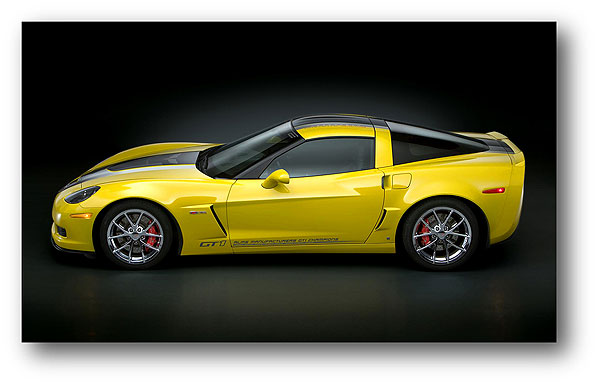 When the C6 Corvette made its grand debut at the American International Auto Show in Detroit in January 2004, after all the cheers, the next question was, “Where’s the Z06?” Two years later the C6 Z06 debuted at the 2006 American International Auto Show in Detroit. No one was disappointed! Where as the C5 Z06 was a well-executed Corvette Hardtop, with a buffed LS6 engine and some nice visual add-ons, the C6 Z06 was a totally unique car that looked like it was on steroids – and it was!
When the C6 Corvette made its grand debut at the American International Auto Show in Detroit in January 2004, after all the cheers, the next question was, “Where’s the Z06?” Two years later the C6 Z06 debuted at the 2006 American International Auto Show in Detroit. No one was disappointed! Where as the C5 Z06 was a well-executed Corvette Hardtop, with a buffed LS6 engine and some nice visual add-ons, the C6 Z06 was a totally unique car that looked like it was on steroids – and it was!
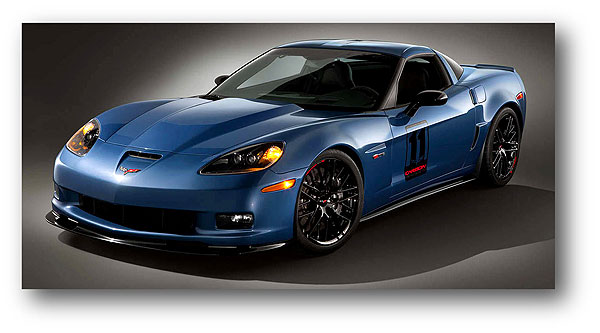 The C6 era was a mixed bag. At first the press couldn’t praise the car enough, then the complaints about the interior started. When the economy faltered and sales dropped, it was attributed to the car not being “enough.” When the C7 speculation mania kicked in, the Z06’s greatness was over shadowed. From 2006 to 2013 Chevrolet sold 27,015 Z06s. The first three years, 2006, 2007, and 2008, Chevrolet sold 6,272, 7,760, and 7,227 Z06s respectively. In 2009 sales dropped to 3,386 and from 2010 to 2013 sales never went past 2011’s 904 units.
The C6 era was a mixed bag. At first the press couldn’t praise the car enough, then the complaints about the interior started. When the economy faltered and sales dropped, it was attributed to the car not being “enough.” When the C7 speculation mania kicked in, the Z06’s greatness was over shadowed. From 2006 to 2013 Chevrolet sold 27,015 Z06s. The first three years, 2006, 2007, and 2008, Chevrolet sold 6,272, 7,760, and 7,227 Z06s respectively. In 2009 sales dropped to 3,386 and from 2010 to 2013 sales never went past 2011’s 904 units.
The base price of the 2006 Z06 started at $65,800 and by 2013 had risen to $76,575. Aside from very minor improvements and the expansion of the dry sump oil system from 8 to 10.5 quarts of oil in the 2009 model, the Z06 was unchanged from beginning to end. Serious racer hardware was made available in 2011 with the RPO Z07 option, which we’ll get into later. What this means is that the basic foundation of the Z06 was solid. Lets take a look at the basic Z06, and then we’ll get into the Special Editions, and the Z07 Ultimate Performance Package. The Z06’s appearance is very aggressive. The wide front fenders with an integrated front air dam with a small splitter, and rear fender flares look track-ready. The front fender vents (now called “extractors”) and rear fender brake scoops are functional and add to the racer look. The rear of the Z06 had a small spoiler and the four stainless steel exhaust outlets were larger than the base Corvette. This was arguably the meanest-looking production Corvette ever offered to that date.
 The Z06’s LS7 427 engine had a full 100-horsepower more than it’s predecessor and was chock-full of racer hardware, including: titanium rods and intake valves, 11:1 compression, and a 7,000 rpm redline with a 7,100 rpm fuel shut-off. The dry-sump oil system used 8 quarts of synthetic oil and a remote reservoir. The cylinder bores were 4.125-inches with pressed in steel sleeves. The LS7 was the most advanced engine GM had ever offered and was hand-assembled at the GM Performance Build Center in Wixom, Michigan. All C6 Z06 Corvettes used six-speed manual transmissions.
The Z06’s LS7 427 engine had a full 100-horsepower more than it’s predecessor and was chock-full of racer hardware, including: titanium rods and intake valves, 11:1 compression, and a 7,000 rpm redline with a 7,100 rpm fuel shut-off. The dry-sump oil system used 8 quarts of synthetic oil and a remote reservoir. The cylinder bores were 4.125-inches with pressed in steel sleeves. The LS7 was the most advanced engine GM had ever offered and was hand-assembled at the GM Performance Build Center in Wixom, Michigan. All C6 Z06 Corvettes used six-speed manual transmissions.
The C6 Z06’s all-new aluminum frame was a total surprise – no one was expecting it. The new all-aluminum frame was proof that with the right shaping, extruding, bracketing, and bonding, an aluminum frame could not only be lighter, but 30-percent stronger than the C6’s hydroformed steel frame. The Dana Corporation built the frames. To reduce weight, the engine cradle and fixed roof panel were made of magnesium. The basic C6 brakes were excellent, but the Z06 went to the next level. The front brakes used 6-piston/6-pad calipers with 14×1.3-inch cross-drilled rotors and the rear brakes had 4-piston/4-pad calipers with 13.4×1-inch cross-drilled rotors. The Z06-specific 10-spoke aluminum wheels were 18×9.5 on the front and 19×12 on the rear, shod with Goodyear Eagle F1 Supercar tires, P275/35ZR18 on the front and P325/30ZR19 on the rear.
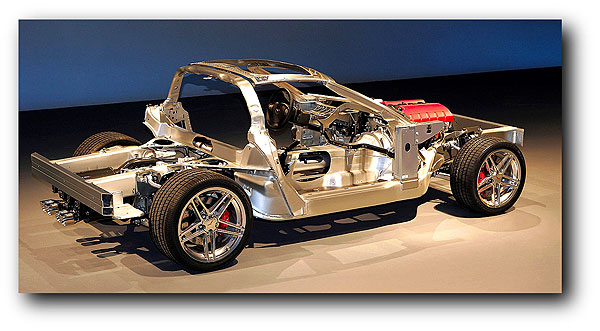 Designed to be a lightweight track car, the front fenders and wheel housings were made of carbon fiber and the floor was a unique balsa and carbon fiber sandwich. More carbon fiber was to come. Other details unique to the Z06 included; rear-mounted battery, no passenger power seat, reduced sound deadening material, and no power rear hatch. The power hatch became standard in 2009. The racer-friendly Head-Up Display was standard. The weight saving and power enhancement netted a 3,132-pound Corvette that delivered 0-60-mph in just 3.7-seconds – stunning in 2006!
Designed to be a lightweight track car, the front fenders and wheel housings were made of carbon fiber and the floor was a unique balsa and carbon fiber sandwich. More carbon fiber was to come. Other details unique to the Z06 included; rear-mounted battery, no passenger power seat, reduced sound deadening material, and no power rear hatch. The power hatch became standard in 2009. The racer-friendly Head-Up Display was standard. The weight saving and power enhancement netted a 3,132-pound Corvette that delivered 0-60-mph in just 3.7-seconds – stunning in 2006!
Lets look at pricing. The base price of a 2006 Corvette was $44,600 – the premium Z06 had a base price of $65,800. By the time the 2013 Z06 arrived, the price of the base Corvette was $50,575 and the Z06 had increased to $76,575 – that’s $26,000 more than the base 2013 model and $10,775 more than the 2006 Z06.
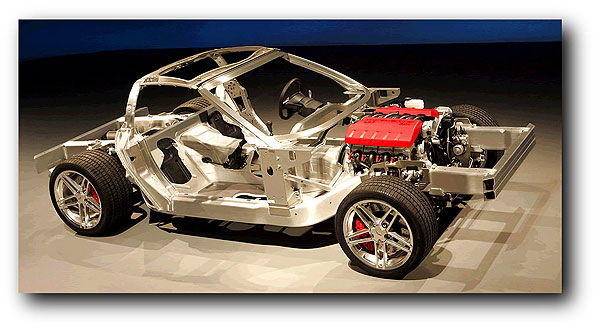
It took about a year before customer reports started coming in that the new Z06 had a nasty temper. As much as the suspension and brakes were matched to the LS7’s 505-horsepower, when pushed to the limit, the rear tires would break surface contact almost instantly, and with little-to-no warning. Many a Z06 owner learned from seat-of-the-pants experience that their car was a beast and hard to control at it’s limits. You have to give Kudos to Chief Engineer, Tadge Juechter and his team – when Z06 customers talked, they listened. To start, all 2011 Z06s ran on Goodyear F1 Supercar 2 tires and the exhaust system was tuned for better mid-range torque.

Lessons were learned from the very successful Corvette Racing Team’s C6.Rs, especially the importance of downforce, improved tires, and brakes. Arriving in 2011, Corvette Engineering’s solution was two-fold. First was RPO Z07, the Ultimate Performance Package, for “only” $9,495. But customers sure got a lot! The package included Brembo ceramic brakes, the F55 Magnetic Ride Control system and Competition Gray ZR1-style wheels, shod with Michelin Pilot Sport 2 tires that looked more like racing slicks with a few grooves for tread. And to increase downforce so that drivers could better apply the LS7’s 505-horsepower through the curves, was RPO CFZ, the Carbon Fiber Package, for only $3,995. The package included a more aggressive front splitter, side rockers, and a body-colored, ZR1-styled, full-width rear spoiler.
In 2012 the Z07 package changed. The price was reduced to $7,500 and the F55 Magnetic Ride Control System that was part of the 2011 Z07 package, was now a $2,495 option. The wheels and tires were changed to the lighter cup-style wheels, shod with Michelin Pilot Sport Cup tires. Also available on 2012 Z06 Corvettes was RPO B92, the Carbon Fiber Hood (previously seen on the 2011 Carbon Edition Z06), for $2,495.
In the eight years of C6 Z06 production, Chevrolet offered five dedicated Z06 Special Edition Corvettes and two special options that were available on the Z06. All of the Special Edition Z06 Corvettes were appearance packages only, with no performance enhancements – the basic Z06 was plenty for most drivers. Special Edition C6 Z06 Corvettes included: the 2007 Ron Fellows Z06 ($77,500 – 399 units), the 2008 427 Limited Edition ($84,195 – 505 units), the 2009 GT1 Championship Special Edition ($86,486 – 55 units), the 2009 Competition Sport Special Edition ($77,600 – 20 units), and the 2011 Carbon Edition ($90,960 – 252 units). In 2012 the all-black Centennial Edition, RPO ZLC option, was available on all Corvettes for $4,950, 195 ordered on Z06 Corvettes. And lastly in 2013 the 60th Anniversary package, RPO Z25 was available on all Corvettes for $1,075 – 103 ordered on Z06 Corvettes.
Forty-three years after the obscure RPO Z06 option for racers (only 199 were built) the Z06 was solidly Chevrolet’s track Vette with all the creature comforts imaginable. The Z06 had also become a living legend, kind of the Elvis Presley of Corvettes. There’s a stunning video on YouTube titled, “The King is Back Z06 Corvette” featuring a black Z06 blasting away on a flat stretch of dusty desert with what looks like an early 70s Elvis, in a white jumpsuit (the THIN Elvis!), with a rendition of “Burning Love” pounding in the background. It’s a befitting tribute to one of the great legends of Rock’n Roll and what has become a legend in the world of Corvettes. – Scott
Coming up Next! Pt. 4 – The Mighty C7 Z06: GM’s flagship performance car boldly goes where no street Vette has ever gone before – deep into “Track Car Territory.”
Z06 Corvette History Pt. 1, HERE.
Z06 Corvette History Pt. 2, HERE.
We have the 1963 Z06 Corvette “America’s Old Glory” print series HERE.
We have C5 Z06 Corvette “America’s Old Glory” prints HERE.



